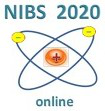Speaker
Description
BTR code is used for NBI beamlines design and studies since 2005. Initially tailored for beam re-ionized particles tracking in NBI Ducts, BTR finally became a universal tool for 3D geometry optimization and thermal loads evaluation in NB lines. BTR simulation includes all variety of neutral beam formation and transport conditions - after the ion beam extraction from the Negative or Positive Ion Beam Source. From the very beginning BTR was created for public usage, and it goes with interactive user-friendly interface (Windows GUI). BTR code tracing model is straight-forward and deterministic (with no random values used), thus it is replicable and easily cross-checked with other beam tracking codes, including analytical models (PDP code). BTR standard beam is a 2D array of beamlets, their spatial positions, focusing and inner angular distributions can be reproduced with high resolution (100-100000 macro-particles per each beamlet). The model 6D statistics leads to precise evaluations of beam direct losses and power deposition profiles at beamline components (currently represented by 50 - 300 surfaces in total). BTR is parallel and able to trace up to 1e10 macro-particles within few hours on average Windows machine, with the best performance achieved on 4-8-processor systems. Today BTR is a lively and evolving code, and all the Users can have a free full-time/full-life support (3FS). Basic applications of BTR code are presented – with a focus on conventional BTR versions (Single-Run).

